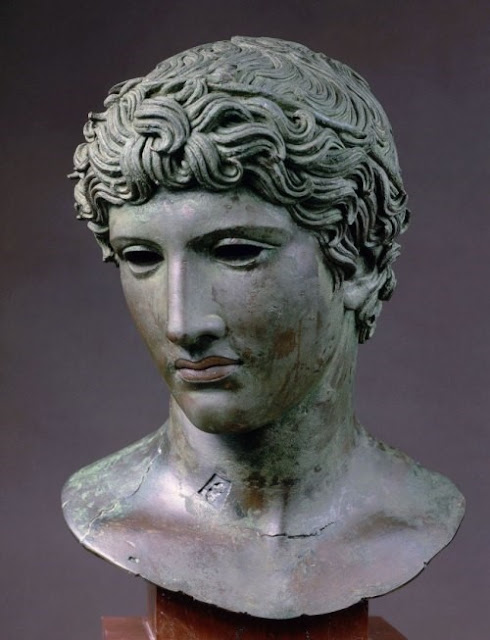Herculaneum, Italy
50 BCE
33 cm in height
Bronze
Copper inlays for the lips
The sculpture portrays the face
of a young man barely out of adolescence. His lips were embellished with red
copper and it originally had inlaid eyes. The wreath of wild olive suggests
that this figure is a victorious athlete, and the form of the bust indicates
that it was set atop the pillar of a herm. The precise arrangement and
striations of the hair are reminiscent of works by the fifth-century B.C.
sculptor Polykleitos, but the melancholy expression and the delicate appearance
of the face are characteristic of first-century B.C. Roman creations made in
Classical Greek style.
e work is generally known as the
“Benevento Head,” although this name is based on a misunderstanding that has
long since been cleared up: the bronze was found not at Benevento but during
archaeological excavations carried out at Herculaneum, also in the Campania
region of southern Italy. Presented to the lord of Benevento by Ferdinand II,
king of the Two Sicilies, the head was later mistakenly thought to have been
discovered at Benevento.
(via didoofcarthage)

